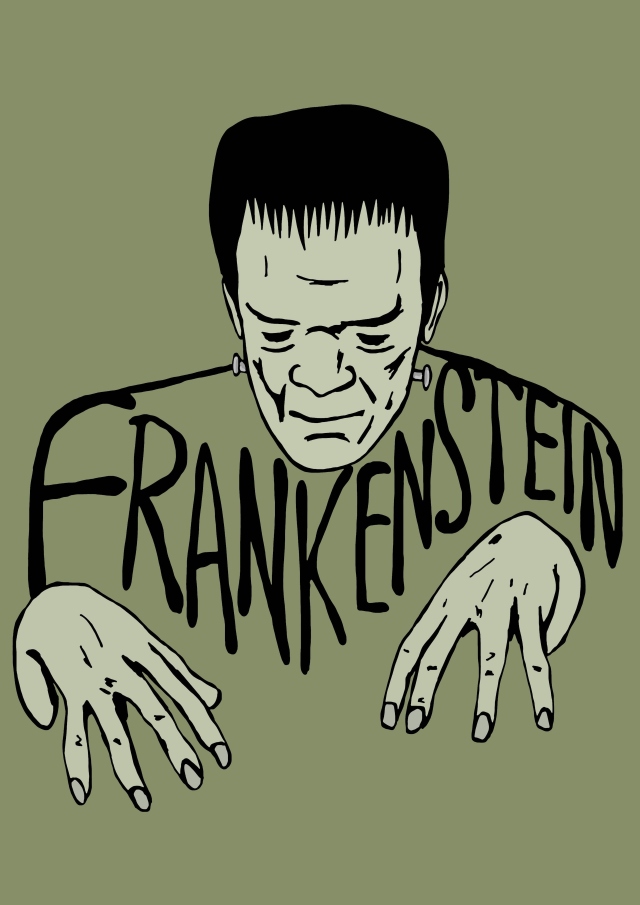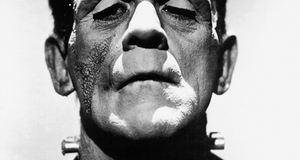Sex and Sexual Violence in Mary Shelley's Frankenstein
By
2017, Vol. 9 No. 03 | pg. 1/2 | »
IN THIS ARTICLE
KEYWORDS
Anyone in pursuit of knowledge is bound to encounter sex somewhere along the way. In the early 19th century, a period during which sex was unspeakable, fiction writers developed a distinct penchant for the unknown.2 Mary Shelley’s Frankenstein is a standard bearer for the Gothic genre precisely because of its incorporation of the abnormal and slightly supernatural. Victor Frankenstein makes a fatal misstep in attempting to do God’s work. He abandons his Adam, who returns to plague and destroy his life. Told through the framed account of a Captain Walton, who encounters Frankenstein in pursuit of his monster across the frozen northern sea, Frankenstein begins with a brief account of his picturesque childhood. Frankenstein begins his great experiment at university in Ingolstadt, where he brings his horrifying creature to life. A year after panicking and abandoning the monster, Frankenstein learns that his brother, William, has been murdered. Frankenstein’s conviction that his monster is the murderer is confirmed when he encounters the creature in the mountains outside of Geneva. In another layer of framed narrative, the monster gives an account of his life so far—his unceremonious birth, his acquisition of language and knowledge from the pure and impoverished De Lacey family, and his eventual turning away from the goodness of mankind. 
The monster offers a truce in exchange for Frankenstein’s hand in the creation of a female mate for the monster. Partway through the project, Frankenstein changes his mind and destroys the new creature. Enraged, the monster wages war on Frankenstein and all he loves, and he wastes no time in murdering Frankenstein’s beloved friend, Henry Clerval. In the time after Clerval’s death, Frankenstein resumes planning his marriage to Elizabeth, his de facto foster sister. When the monster murders Elizabeth on their wedding night, Frankenstein vows to pursue him to the ends of the earth to exact his revenge. The narrative concludes with Walton’s account of Frankenstein’s death. Walton returns to his cabin to find the monster poised over Frankenstein’s body. Heartbroken, the monster says his final goodbyes to Frankenstein and resolves to end his life.3 Shelley’s text contains infinite iterations of the human condition, but the story has one glaring omission: sex. Frankenstein is engaged to his childhood foster sister, Elizabeth, but we rarely see the two alone together, and these encounters are characterized more by sibling-like affection than by the romance and devotion of two people engaged to be married. Frankenstein himself is especially sterile, almost frigid. His strict rejection of all things sexual speaks to the attitude of the era. However, the deliberate omission of sex and sexuality from Frankenstein’s narrative only makes it more present.4 Sex joins the ranks of the unspeakable horrors in the undercurrent of Shelley’s text. Most notably, Frankenstein’s creature is born with human instincts, sexuality among them. In his wish for a mate, Frankenstein’s monster exhibits more pointed human desires than Frankenstein himself. The relationship between Frankenstein and his monster has been the subject of countless interpretations and reimaginings of Shelley’s original story, and it has taken countless different forms. In his 2011 play of the same name, Nick Dear focuses on the Creature’s quest for humanity against Frankenstein’s obsession with the empirical. The two men—as they are both represented—struggle for the upper hand in a distinctly masculine, non-sexual relationship. However, many authors have also explored the homoerotic nature of the relationship between Frankenstein and his monster. Scholar Mair Rigby draws on Foucault’s The History of Sexuality to discuss the nature of forbidden sexuality and queerness in “Do You Share My Madness?: Frankenstein’s Queer Gothic.” She writes:
Rigby writes about sex as a “privileged site of ‘truth,’”6 in which, by willfully omitting sex from our representations of ourselves, we bring it even more into our lives. Frankenstein is, above all else, a shining example of the time in which it was written. According to Rigby, the early 19th century was a profoundly dangerous time to be open about sex, especially gay sex.7 Furthermore, Foucault postulates that sexual activity perceived as abnormal is “more subject to the demand for truth”—the absence of sex from the text highlights its secrecy, bringing it even farther forward in the mind of the reader.8 Nick Dear’s Frankenstein: A Study in Heterosexual Love and ViolenceIn his account, Frankenstein often makes reference to his pursuit of nature’s secrets, “always having been imbued with a fervent longing to penetrate the secrets of nature.”9 It is not unreasonable to associate scientist Frankenstein’s unrelenting assault on knowledge as a form of violence not unlike rape, for rape is most closely associated with the assertion of power and forcible exposure of one’s most intimate secrets—the secrets of the body. Frankenstein “pursued nature to her hiding-places,”10 violating its—her—previously unknowable secrets and bending them to his will. Frankenstein’s rape of nature follows a progression similar to those of classical literature. Like in the Roman myth of Lucretia or Shakespeare’s Titus Andronicus, this initial act of violence is the catalyst for a cascade of destructive events. Frankenstein’s destruction of nature’s sovereignty is the precipitating event for his own destruction, but beyond that, his transgression causes tragedy to rain down all around him. Frankenstein’s offense is twofold: not only is he pursuing knowledge reserved for the divine or superhuman, but he is seeking to create a living being without the aid of a female partner. He is circumventing the laws of nature in pursuit of the power that such knowledge supposedly affords. Rigby writes:
Playwright Nick Dear has capitalized on this interpretation to write a short, brutal dramatic version of Shelley’s original text from the perspective of Frankenstein’s monster, whom he consistently calls the Creature. Throughout Dear’s script, the Creature is consistently referred to as such. However, in Shelley’s text, the Creature is referred to by myriad epithets, including “thing,” “daemon,” “fiend,” and “wretch,” among others. The play begins with the Creature’s awakening and ends with Frankenstein’s pursuit of his creation into the arctic. The story is told primarily through the lens of the Creature, transforming Shelley’s original narrative. The audience sees enacted in front of them many parts of Shelley’s story told only through the narration of their consequences—the Creature’s time with the De Lacey family, the murders of William and Elizabeth. Most notably, we see the scene between the Creature and Elizabeth unfold, and we see the Creature rape and murder her.12 This event is the culmination of the Creature’s own fall from grace. We watch as the Creature’s moral code is built up from nothing and reduced to even less. The foundation of this code is the Creature’s concept of love. He observes the De Lacey family—a married couple and an old man in Dear’s universe—and develops a tragically idealistic and almost naive image of love and partnership. It is no surprise that the Creature believes that love can resolve any tension. Early in his relationship with the De Lacey family, he spies the couple, Agatha and Felix, marveling at one of the tasks the Creature has completed in secret:
This slice of pastoral life paints a woefully incomplete picture of the human experience, but to the Creature, it is the pinnacle and essence of companionship. In Dear’s interpretation, the Creature develops a relationship with the old man De Lacey, who teaches him the foundations of literature, philosophy, and humanity. The Creature shows a deep interest in love and how to obtain it. De Lacey says. “Yes! A good man deserves it. You are a good man. Someone will love you, whoever you are.”14 In many ways, this idea echoes the platitudes served to young children; throughout the Creature’s development, we can often see traces of De Lacey’s diluted teachings in the Creature’s impulsive, twistedly childish, behavior. The Creature threatens to continue hurting Victor’s loved ones unless Victor agrees to build a female counterpart to be his mate. The Creature’s simplified sense of human interaction comes strongly into play here: not only does the Creature believe that love will resolve his tenuous relationship with society, but he also believes that his threat will be sufficient to give him what he wants. Victor challenges the Creature’s flawed logic and asks him why he desires a mate. The Creature replies, “Because I am lonely! Every creature has a mate...All I ask is the possibility of love.”15 This confrontation solidifies the Creature’s central struggle to be seen as human. The Creature has the same instincts as a human—to love and lust and want more than what he has—and, like many people, he puts the idea of love and women on a pedestal, out of his reach, but also out of the reach of true humanity and destruction. This tendency begins with the Creature’s dream, in which he encounters a nameless woman, who enchants and captivates him. In this sequence, only the Creature speaks; the woman is nothing but a body. What the Creature wants is someone to idolize, to worship—to him, this is love. According to the Creature, the one trait truly separating him from humanity is his solitude. With a mate, he postulates, he could be complete. Victor points out that the female creature may not even return the Creature’s love, but he spurns the thought. The Creature believes that it is impossible to reject such pure devotion. He is ready to promise Victor nearly anything in exchange for such a mate, already madly in love with someone who does not exist.16 The Creature is captivated by a mere idea, and Victor marvels at the Creature’s genuine passion and eventually agrees to return to the laboratory. Victor is propelled to undertake the creation of another creature not by his own empathy, but by his insatiable desire to achieve.17 The audience must question which of the two is more human—the monster obsessed with love, or the man incapable of it. We follow Victor as his own life unravels. However, we are left to decide whether the Creature is at fault for Victor’s destruction or whether the foundations for disaster were laid long before the Creature even awoke. In a scene between Victor and his fiancee, Elizabeth, the audience gets the sense that Victor has never been fully functional. Elizabeth’s frustrations span the emotional and sexual, merely exacerbated by the advent of the Creature but owing themselves to something much deeper and more pervasive. Elizabeth gently reminds Victor that they are to be married and, by conjunction, that they have to have sex in the near future. She asks if Victor wants to give her children; if he finds her attractive. Elizabeth’s appeals show a clear progression from the emotional—questioning Victor’s desire for a wife and a family—to the sexual, a more desperate attempt to earn Victor’s attention:
Elizabeth’s appeal falls on deaf ears, even when she engages Victor physically. She senses that his mind is in a place far from her. Elizabeth’s understanding of Victor’s baser nature, as well as her fear that he has none, paint her as a more complete character than Shelley’s Elizabeth. Elizabeth is acutely aware of her position as a woman; she cannot pursue an education or choose the man she marries; her only true possession is her sexual sovereignty, which she offers to Victor.19 His effective rejection of Elizabeth, then, precipitates her complete erasure as a person, culminating in her rape by the Creature. The conversation between the Creature and Elizabeth leading up to her rape is alarmingly pleasant. It is the first interaction between the Creature and another human that feels natural, because it is the first conversation in which the Creature uses his new skills to manipulate and hurt another person. From the outset, the Creature portrays himself as exactly what Elizabeth wants him to be. He has her touch him, immediately breaking the barrier of bodily boundaries so prevalent in the rest of the text.20 Elizabeth’s touch harrowingly foreshadows the violation to follow. The Creature knows that Victor is unfeeling and inaccessible, and he uses this to his advantage. He asks Elizabeth:
The question is far too personal, and it does exactly what the Creature wants it to do. It shows him to be more sensitive, more insightful, and more human than Victor. He takes control of the conversation, and of Elizabeth. The Creature uses his knowledge of Victor to undermine his relationship with Elizabeth, giving her the attention she has been missing. He preys on her better nature and good heart:
The playwright’s direction, as well as the punctuation of the lines, show vividly that the Creature is in a different space from Elizabeth. He is in control, and she is giving him the answers that she knows he wants. Elizabeth may know that what the Creature wants is certainly more than just a friend, but she still offers herself. It is possible that Elizabeth views sex in a similar way to the Creature’s perspective of love—it is something she lacks, something which, once attained, will change her entire world. Unfortunately, it does. Elizabeth’s rape is the final step in her complete dehumanization. She becomes nothing but a pawn in the Creature’s game against Victor. Victor looks on momentarily and does nothing, marvelling instead at the evil of which his creation is capable.23 It becomes clear in that moment that neither man views her as an equal, or even as a person. Instead, she is just another factor in the war between them. The Creature murders her and says, “Now I am a man,”24—he does not become a man until he strips a woman of herself, violating her integrity and trust in their brief relationship. The Creature uses Elizabeth to put himself on equal footing with Victor; the rape is just as much an act of violence against Victor as it is against Elizabeth. This is the point of no return for the Creature. In this moment, he becomes Victor’s enemy forever, and, as a result, acquires the whole of Victor’s attention until the day one of them dies. The rape of Elizabeth is an all too satisfying bookend for Victor’s journey. Victor raped nature, penetrating its innermost secrets and bringing the unnatural to life. It is only fitting that the story should end—or begin, even—with another literal violation, not only of Victor’s wife, but of his entire being. Frankenstein and Queer SexRigby explores the ways in which the language and environment of Frankenstein lend themselves to a queer reading. She writes:
The early 19th century was as dangerous a time as any to be openly gay. This tension, Rigby postulates, contributes to Gothic fiction’s obsession with the unknown. Gay sex is the pinnacle of the forbidden, and the struggle between the natural and unnatural is starkly reflected in Shelley’s text.[26] When Victor Frankenstein violates the rules of nature and brings about the unnatural, he also opens up the channels of forbidden sex and sexuality. The fear and anxiety surrounding sex in Shelley’s time are prevalent—almost thematic—in her work. Traveling to and from the tranquil backdrop of Geneva, the reader finds herself constantly at odds with nature, swept up by the tension between home, or the natural, and science, the unnatural. Frankenstein himself is aware of his transgression. In recklessly pursuing dominance over nature, he has committed a second Original Sin. The gravity of this realization makes him physically ill and filled with paralyzing fear. But what is this fear? Frankenstein recounts, “He held up the curtain of the bed; and his eyes, if eyes they may be called, were fixed on me.”27 Frankenstein’s fixation on the monster’s eyes suggests a more subconscious preoccupation with the male gaze—to stare is to uncover and to violate. In his uncovering of nature’s secrets, Frankenstein has fixed his own gaze on nature; in return, it fixes its gaze on him. Rigby writes,
This invasion of bodily boundary ignites one of the most primary and pervasive fears in literature—the fear of rape. Nick Dear transformed this undercurrent into Elizabeth’s narrative in his adaptation; but through Rigby’s interpretation, it can also be read as part of Frankenstein’s story. Frankenstein’s fear is not only fear of physical violation, but fear of retribution brought on him by the laws of nature that he has transgressed. Frankenstein’s crime gradually infects every aspect of his life. The fear that was limited to his room at Ingolstadt invades tranquil Geneva when the monster murders William. The monster determines to punish Frankenstein for his reckless abandonment by hurting his loved ones. This retribution is what Frankenstein fears most—retribution not just for his success in bringing the monster to life, but for his avarice and hubris in doing so. Frankenstein’s uncontrollable desire incorporates a sense of peril similar to the desire for another man—both are forbidden, and both are followed by the swift and terrible retribution believed to be deserved by homosexuals in Shelley’s time. Frankenstein shows an incriminating obsession with the unknown, and in his first encounter with the monster, his wonder almost gets the upper hand over his horror.
Frankenstein describes his creation much like one might describe Michelangelo’s David—entranced by the beauty and fine detail, he almost sexualizes the monster—until he lights on the eyes. After he notices the eyes, Frankenstein’s image of the creature is suddenly macabre and grotesque. Frankenstein’s terror at the gaze of the monster connects to his own scrutiny of nature. Who can see the unknown? Frankenstein’s fatal flaw is his eagerness to see nature for himself, and he is undone by his own fear of being seen by nature. This knowledge of the forbidden not only encompasses the secrets of science, but it also includes the secrets of sex and sexuality. Frankenstein’s anxiety upon being seen by the monster imply a more chronic fear of sex. At Frankenstein’s age, it is fair to assume that he has never had a sexual relationship, especially not with Elizabeth, his betrothed. Frankenstein seems to ignore sex altogether, eschewing it in favor of study. To Frankenstein, sex and family are mutually exclusive with the success and power he seeks. He chooses to pursue power, and he creates a being entirely without the aid of the female body. Frankenstein turns sex—and Elizabeth—into something unnecessary, frivolous, and low. By Rigby’s reading, Frankenstein’s anxiety around sex indicates a kind of “homosexual panic” common in Gothic literature.30 Frankenstein can never safely acknowledge his curiosity or even the existence of the male body as a sexual object, which leads him to regard sex itself as panic-inducing.Continued on Next Page » Suggested Reading from Inquiries Journal
Inquiries Journal provides undergraduate and graduate students around the world a platform for the wide dissemination of academic work over a range of core disciplines. Representing the work of students from hundreds of institutions around the globe, Inquiries Journal's large database of academic articles is completely free. Learn more | Blog | Submit Latest in Literature |


















